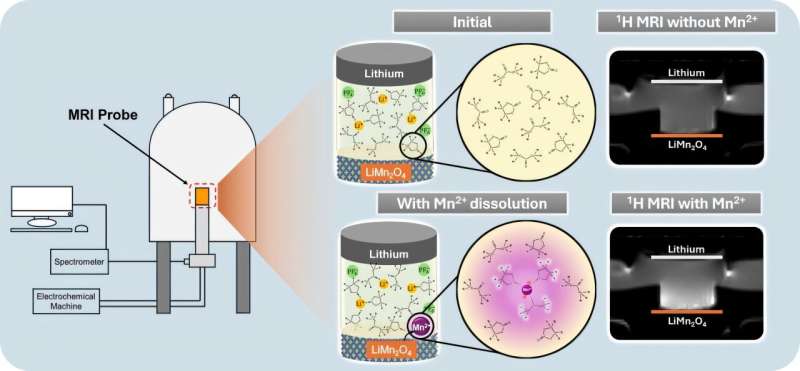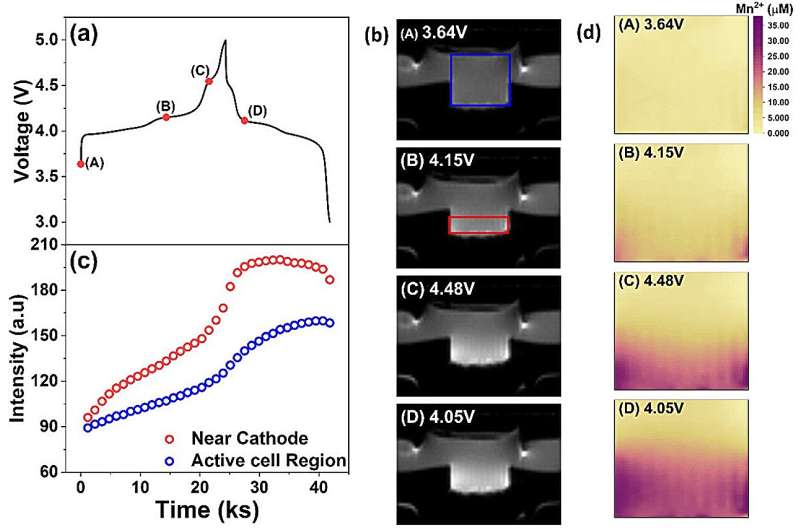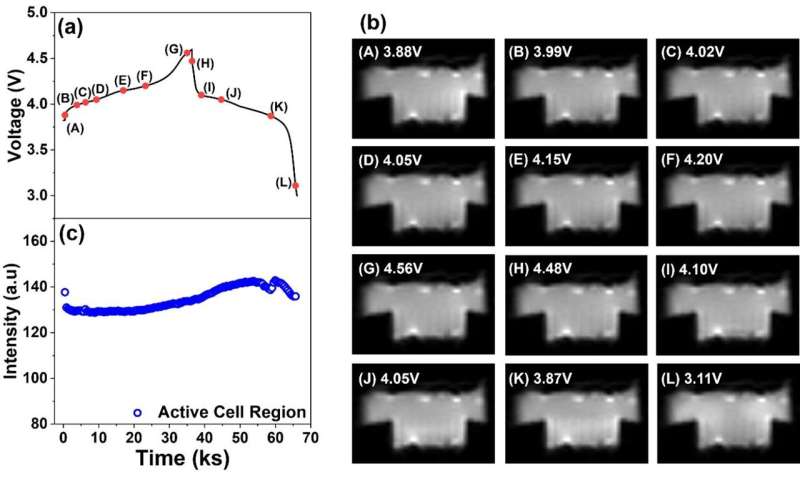As research advances, MRI could play a crucial role in shaping the future of lithium-ion and next-generation battery technologies.

Lithium-ion batteries power countless modern devices, from smartphones to electric vehicles. Despite their efficiency and affordability, these batteries degrade over time, raising concerns about performance and safety. A major factor in this decline is the dissolution of metal ions from the cathode into the electrolyte, a process that has been difficult to study due to its microscopic scale.

Researchers at Tohoku University have developed a method to detect and analyse this dissolution using nuclear magnetic resonance imaging (MRI). Their findings could significantly improve lithium-ion battery design and longevity. They emphasized the impact of their study: “The results show that even a very small amount of manganese (Mn) dissolution can be detected with high sensitivity using MRI, allowing real-time visualization and accelerating research.”

(a) Charge-discharge profile for LiMn2O4/1M LiTFSI MCP/Li cell. (b) 1H MR images acquired at potentials mentioned in a. (c) 1H MRI signal intensity change during charging and discharging. Credit: Hellar et al.
MRI technology, commonly used in medical imaging, employs magnetic fields and radio waves to generate detailed images. To improve visibility, contrast agents like gadolinium are often used. The Tohoku team leveraged this principle, as Mn2+—the dissolving form of manganese—exhibits paramagnetic properties, making it detectable in MRI scans.
The study focused on observing Mn2+ dissolution from a spinel-type LiMn2O4 cathode in a commercial LiPF6 EC:DMC electrolyte. Increased signal intensity in MRI scans confirmed metal ion dissolution in real time. The researchers then tested an alternative electrolyte, LiTFSI MCP, developed by Germany’s MEET Battery Research Center. The absence of signal changes in MRI scans suggested that this electrolyte effectively suppressed manganese dissolution.
The team highlighted the significance of this technique: this method enables researchers to study metal ion dissolution under various electrochemical conditions, aiding in lithium battery material design and performance enhancement. This approach offers new insights into battery degradation, paving the way for more durable and efficient energy storage solutions.







